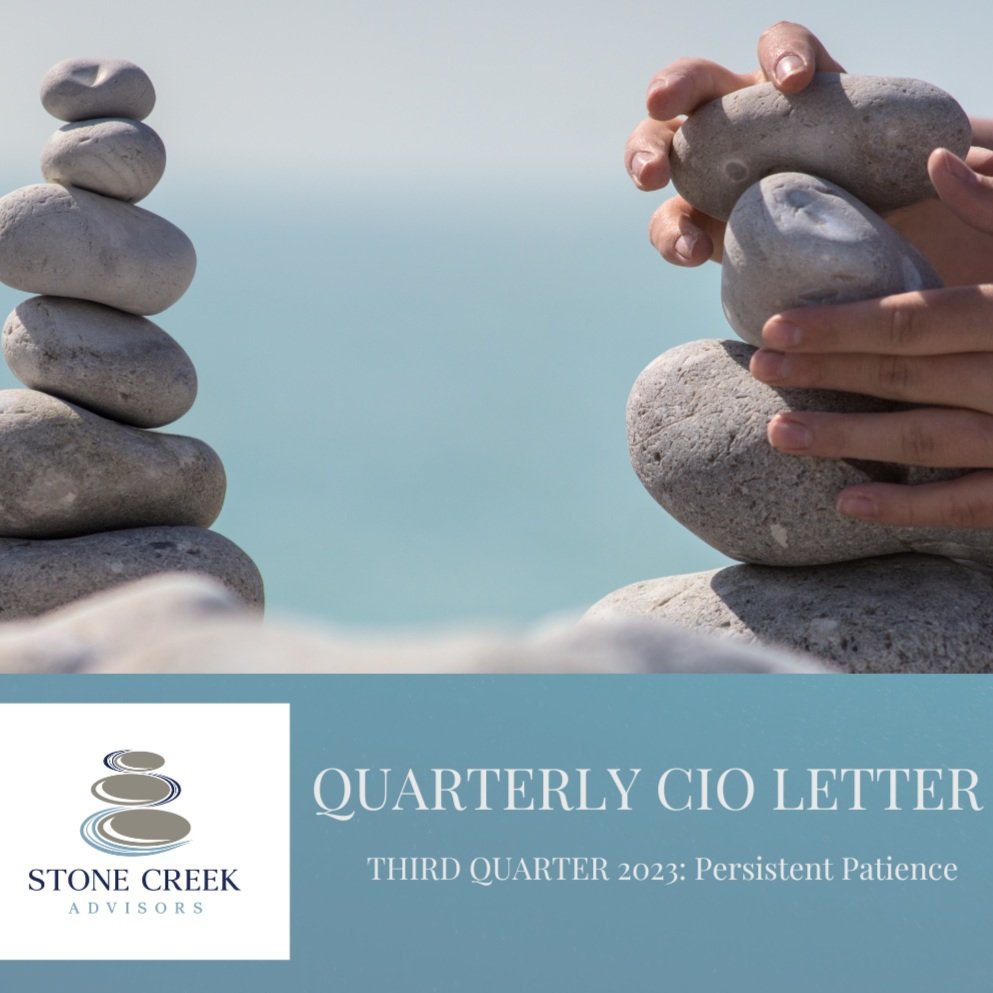
Quarterly CIO Letter: Third Quarter 2023
We believe very few of the risks outlined in this letter are priced into the market, keeping us extremely cautious and persistently patient while getting paid over 5.5% (annualized) in short-term treasuries. The US equity market today is trading at a higher valuation than the risk-free alternative of short-term treasuries. This market dislocation defies logic, especially at a time when risks are building, earnings expectations are optimistic, and tailwinds are turning into headwinds. Market dislocations can remain for periods of time but tend to prove unsustainable in the long term. Momentum works until it does not. When it stops working, get the heck out of the way.

Quarterly CIO Letter: Second Quarter 2023
Every investment decision we make is based on the amount of risk we are taking for the potential reward we are expecting. Today, we do not think the risk versus reward profile in most risk assets is attractive.

Quarterly CIO Letter: First Quarter 2023
The first quarter contained two of the three biggest bank failures in US history as well as the downfall of Credit Suisse. Additional risks continued to brew under the surface. Geopolitical tensions increased, OPEC+ production cuts shocked the markets, and the debt ceiling debate was not solved. Markets experienced quite a volatile ride caused by increased uncertainty of the future trajectory of monetary policy. February printed a hot January inflation reading and expectations that the Fed was not done raising rates resurfaced. However, the banking crisis unwound that expectation. Investors speculated the crisis would fuel tighter lending standards, potentially finishing the Fed’s job for them and allowing the Fed to significantly cut rates later this year. By month end, the banking sector risk seemed contained and risk assets continued their climb up the metaphoric “wall of worry”. Will one of the bricks come loose? The bond market seems a bit more concerned than the stock market. Time will tell.

CIO Letter: Past the Easy— Tightening Has Taken Its First Casualties
The Federal Reserve seems to have tightened until they broke two regional banks. This was a hard lesson in diversification and risk management for these banks, but does this mark the end of the rate hike cycle? While this continues to evolve and unfold quickly, we continue to think the Fed has more work to do on the inflation front. However, their job was just made much harder by now having to prioritize between inflation, full employment and financial stability. In this letter we address what happened with SVB and Signature, what this means for investors, and how we are positioning portfolios in this volatile and uncertain time.

Incorporating Tax Implications into Your Investment Strategy
Have you ever switched advisors only to have the firm you transferred to sell out of every holding in your portfolio, hitting you with a huge capital gains bill that you did not expect? At Stone Creek Advisors (SCA), we certainly take the tax implications of our decisions into account. While risk management is our number one focus and taxes do not drive our investment decisions, they are a factor in our process.

Why Financial Planning is a Critical Component of SCA’s Approach
Stone Creek Advisors was founded on the idea that, as an investor, you should not take more risk than is necessary to achieve your goals, and you should not take risks that you are not paid to take. That may sound like common sense, but the reality is many investors are positioned based upon long-term historical market returns which guide future return assumptions for various asset classes without consideration for what their actual goals, objectives, and time horizon are.
